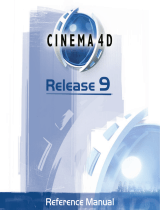Page is loading ...

T
e
a
c
ha
b
le
T
o
u
c
h
a
b
le
s
T
e
a
c
ha
b
le
T
o
u
c
h
a
b
le
s
T
e
x
t
u
r
e
S
q
u
a
r
e
s
™
EI-3049
A
ges 3+
Grades Pre-K+
Teachable Touchables
TM
Texture Squares are a fun, hands-on way to
encourage young learners’ awareness of their sense of touch.
Plus, as children enjoy examining and talking about the squares, they are
building their descriptive vocabulary. Try some of these activity ideas:
Alike and Different
Set out three texture squares: two that match and one that is different. Have a child
identify the one that is different and discuss why. Extension: Have children try this
with their eyes closed or with the texture squares in the bag.
Feel and Find
Separate the ten texture square pairs. Place one square of each of the pairs back
into the bag. Place the other square on a table or tray. Have a child choose one of
the texture squares from the tray. Then, closing his eyes, have him reach into the
bag and try to find the matching square by touch alone. If he has difficulty, remove
some of the squares from the bag or allow him to find it by sight.
Texture Partners
Place each texture square in a small paper bag and give the bags to children. Play
some lively music. Have children walk around taking turns placing their hands in one
another’s bags trying to find someone whose texture square matches theirs. Once
children have found their “texture partner,” they should sit down together.
Texture Talk
Sensory words can be difficult for young learners. For example, they may say the
smooth, mirrored square feels “shiny,” rather than looks shiny and feels smooth or
slick. Before you begin, spend some time with children feeling the squares and
describing how they feel. As children work with the texture squares and other
objects in your school environment, help them build a vocabulary of
adjectives to describe how things feel: rough/smooth, hard/soft,
sticky/slick, heavy/light, hot/cold, slippery, prickly, sharp, stiff,
scratchy, bumpy, bristly, spongy, fuzzy, etc.
Texture Walk
Give each child a texture square as reference. Go on a
walk around your school or in your neighborhood.
Encourage children to identify things in the environment
that have corresponding textures: rough tree bark, a furry
squirrel, a bumpy brick wall, etc.

“I Spy” Textures
Place one square of each of the pairs of texture squares in a bag or other
container. Have a child reach inside the container without looking and
choose a square (for example, the fluffy white square). Ask her to
describe how the square feels (for example, “fluffy” or “soft”). Then
have her walk around the room, feeling objects, until she has found
something with a similar texture. When she has found something,
have her say, “I spy something fluffy. It’s a teddy bear.”
More “I Spy” Textures
Describe an object in the room that you have “spied.” For example, say,
“I spy with my little eye, something that feels smooth. You look out of it.” The
first child that correctly guesses what you are describing (a window) takes the
square of the appropriate texture and walks over to identify the object, “I spy with
my little eye, something that feels smooth. It’s a window.”
Texture Collages
Divide children into small groups. Provide each group with a large piece of
construction paper, old magazines, scissors, glue, and a texture square as a
reference. Have the children work together to create collages for their assigned
texture: rough, smooth, bumpy, slippery, fluffy, furry, soft, etc.
Variation: Have children create collages with items of different textures, such as:
cotton balls, sandpaper, leaves, shells, feathers, twine, cellophane, etc.
Developed in Southern California by Educational Insights.
© Educational Insights, Inc., Gardena, CA (U.S.A.). All rights reserved. Learning
Resources Ltd., King’s Lynn, Norfolk (U.K.). Please retain this information.
Made in China.
www.Educational
Insights.com
Fabriqué en Chine. Informations à conserver.
Made in China. Bitte bewahren Sie unsere
Adresse für spätere Nachfragen auf.
Hecho en China. Conservar estos datos.
TM
/














